#Titanomyrma
Explore tagged Tumblr posts
Text
Paleostream 20/01/2024
results of today's #Paleostream!!!
today we sketched Tyrannasorus rex, Titanomyrma, Hibbertopterus, Proteroctopus




#Paleostream#paleoart#paleontology#digital art#artists on tumblr#digital artwork#palaeoart#digital illustration#sciart#id in alt text#invertebrates#bugblr#insects#bugs#entomology#arthropods#euypterid#Tyrannasorus#Tyrannasorus rex#Titanomyrma#Hibbertopterus#Proteroctopus#cephalopod#cephalopod art#ant#ant art#beetle
125 notes
·
View notes
Text




Invert only Flocking
Tyrannasorus rex/Titanomyrma
Hibbertopterus/Proteroctopus
#paleoart#prehistory#paleostream#paleoblr#tyrannasorus#titanomyrma#hibbertopterus#proteroctopus#made with krita
8 notes
·
View notes
Text

I mean, who didn't die to at least one of those?
#Meme#Ark#ark survival evolved#utahraptor#dilophosaurus#compsognathus#Pulmonoscorpius#therizinosaurus#sarcosuchus#T-rex#spinosaurus#baryonyx#carnotaurus#Titanomyrma#meganeura
25 notes
·
View notes
Text

In the Messel Pit exhibit at the Senckenberg Museum they had this enormous ant, Titanomyrma. I'm guessing this is what that scene from Walking With Beasts with the giant ants eating the terror bird's chick is based on.
20 notes
·
View notes
Text
My dinosaur nerd uncle: What's your favorite dinosaur? My dad knowing exactly what he is doing: Dimetrodon. Uncle: 😒 that's not even a dinosaur. Anyway… OK what about you? Me (not helping): Titanomyrma
9 notes
·
View notes
Text
Ok but

These little shits caused too much trauma

“Titanomyrma gigantea was the largest ant to ever exist. Queens could grow up to 6 centimetres (2.4 inches) long and have a wingspan up to 15 centimetres (5.9 inches). Males and Workers could reach 3 centimetres (1.2 inches) long. It lived in Wyoming during the Eocene, 49 million years ago. “

GUYS GUYS GUYS
The biggest ant was pretty much the same size as the smallest dinosaur!
#yes I'm talking about the Gastornis chick scene#iykyk#walking with dinosaurs#walking with beasts#Titanomyrma
242 notes
·
View notes
Text
Nell'Eocene le formiche erano giganti e volavano
I fossili di formiche giganti sfidano ciò che sappiamo sulle dimensioni degli insetti. Per gli esperti queste antiche formiche erano in grado di mangiare lucertole, uccelli e mammiferi. La Terra di milioni di anni fa era popolata da animali molto grandi ed anche gli insetti, in alcuni casi, non erano da meno. È il caso delle formiche risalenti ad oltre 47 milioni di anni fa con dimensioni paragonabili ad un colibrì. La più grande regina delle formiche che abbia mai popolato il nostro pianeta è stata portata alla luce in forma fossile in Germania (mentre quella scoperta nel nuovo studio è stata scoperta nel Wyoming). Era caratterizzata da una lunghezza di oltre 5 centimetri e aveva ali di oltre 16 centimetri. Si pensa che le formiche del ”suo esercito” siano state in grado di mangiare le lucertole, mammiferi e perfino gli uccelli. Questi insetti erano molto forse ectotermici e per sopravvivere avevano bisogno del calore del loro ambiente; non è un caso che le regine più grandi possano essere scoperte nelle vicinanze ai tropici. Tuttavia per giungere nel Wyoming avrebbero dovuto attraversare il ponte naturale di Bering, che in passato collegava la Russia con Alaska, ma erano state in grado di sopravvivere al freddo?

Un fossile di una gigantesca formica regina rinvenuto in Germania, la più grande formica mai trovata. ( Wikimedia Commons/CC BY 4.0) Una ricerca del 2011 aveva indicato come le formiche avessero approfittato di una fase di riscaldamento per attraversare questa lingua di terra, ma ora un fossile, portato alla luce da poco di un’antica regina delle formiche, complica questa ipotesi. Quest’ultima appartiene alla specie delle formiche giganti scoperte nel Wyoming e in Germania, le Titanomyrma, ma è stata trovata ella Columbia Britannica in Canada, il primo fossile del suo genere ad essere scoperto in un clima così rigido. L’animale in questione è più piccolo del 65% rispetto alla sua controparte del Wyoming, a sostegno dell’idea che le formiche più grandi necessitino di temperature maggiori. Nonostante ciò, un’altra teoria spiega che probabilmente le formiche tolleravano il freddo in misura maggiore di quanto pensassimo e avrebbero potuto attraversare il ponte di terra in qualsiasi momento. “Per ora tutto ciò, rimane un mistero“, spiega infine il paleontologo Bruce Archibald della Simon Fraser University.

La gigantesca formica regina fossile Titanomyrma scoperta nella formazione Allenby. ( Bruce Archibald ) Con il termine Titanomyrma si indica un genere estinto di formiche giganti risalente all’Eocene, circa 40-60 milioni di anni fa. Queste formiche erano tra gli insetti più grandi mai esistiti, con alcune specie che raggiungevano dimensioni di oltre 5 cm di lunghezza e un’apertura alare di circa 15 cm. Si pensa che le Titanomyrma fossero insetti sociali che vivevano in colonie, simili alle formiche moderne. Tuttavia, a differenza delle formiche di oggi, le Titanomyrma avevano delle mandibole enormi e molto potenti che potevano essere utilizzate per catturare prede di grandi dimensioni, come i piccoli mammiferi. Le Titanomyrma sono state scoperte in numerose località nel mondo, tra cui in Europa, Nord America e Asia. Sono state descritte diverse specie, alcune delle quali sono state rinvenute con resti di ali ben conservati, suggerendo che queste formiche erano in grado di volare. Read the full article
0 notes
Text

















My Neogene! The Miocene and Pliocene all in one.
Acrophoca - Argentavis - Micromeryx
Paraceratherium
Livyatan - Thalassocnus - Deinotherium
Purussaurus - Merychippus - Zygophyseter
Megalodon
Macrauchenia - Platybelodon - Chalicotherium
Odobenocetops - Thylacosmilus - Thylacoleo
Neogene Set || Shop || Phone Wallpapers Masterlist
Planned or in the works: Toxodon, Eurhinodelphis, Titanomyrma, Pelagornis, Nuralagus
#art#my art#paleoart#paleontology#science#illustration#neogene#cenozoic#mammals#megalodon#thylacoleo#merychippus#livyatan
52 notes
·
View notes
Text
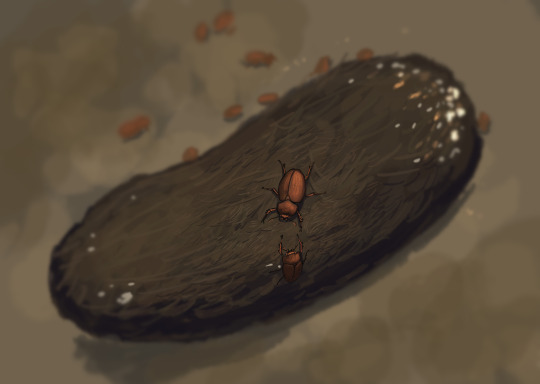



Results from the Flocking #paleostream!
The Will Of The People decided for a invertebrate stream today! Tyrannasorus rex, Titanomyrma, Hibbertopterus and Proteroctopus.
140 notes
·
View notes
Text
That's perfect for an ant goddess!
[ominous deep bongo drums]
Aaaants Of Yoreeee!
We are traveling deep into prehistory to meet the ants who started it all.
[Camera moves through the thick ferns and strange trees of the Cenozoic]
[A huge queen ant two inches long sits on a the trunk of a tree trying to remove her wings. ]
Titanomyrma! The largest ant ever recorded. Distant relatives of the modern driver ants -- the queens have wings unlike their modern cousins. Did they raid like divers ants? We have no workers from the fossil record... so no one knows.
Whatever her life may bring, this huge queen is well provisioned to start a colony. But what is that? [A smaller ant with very strange mandibles makes her way down the tree and is startled by the Titanomyrma queen, who opens her mandibles wide forgetting about removing her wings.] A Haidomyrmecinae ant! She comes from a whole family of ants who were very successful and likely lone hunters. But, this big queen is too ambitious of a target even for the exotic the ants of hell. [ominous deep bongo drums] Who will we meet next in the mists of the ant-filled past? Aaaants Of Yoreeee! (Yes, there is probably something very wrong with me, and it's probably ant-related. I don't know what to do about it but keep posting through it ...)
Bite-Sized! Lore Drop
The Dissected One
This is a malicious entity that is feared worldwide. People use epithets instead of his true name lest you wish to draw his attention to you. He was the first created by one of the demigods. He proceeded to devour the other first created. In doing so he assimilated their forms into his own allowing him to shapeshift. Nobody knows what his true form looks like as he is known to lie. Among his powers, he also developed a forbidden set of magic. Using this knowledge he gave multiple beasts the gift of consciousness and even granted them immortality.
He soon amassed a cult following of people who worship him and want to be blessed by him. Using his followers he tricked the goddess Hinomynia to be infected with the Myalcide fungus. The Blood Mother awoke to bring down her wrath upon him. It is said he now lies with his chest cavity opened in an unknown location. His cult following still exists to this day. However, they are much smaller in number. They still wish to free him from his prison to finish what he started.
#ants#antposting#ants of the past#titanomyrma#hell ants#hell ant#cenozoic#giant ants#ants are perfect
17 notes
·
View notes
Text
The largest ants that ever lived were the Titanomyrma ants. They lived during the Eocene epoch, about 47 million years ago.
17 notes
·
View notes
Text
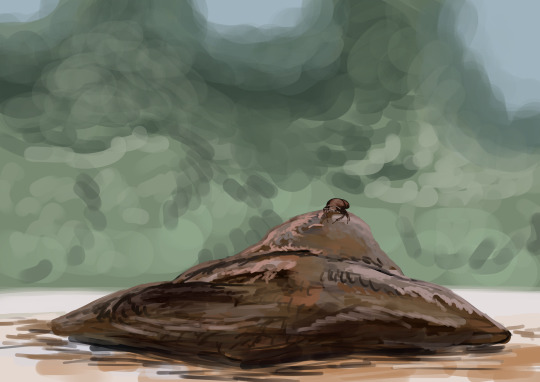
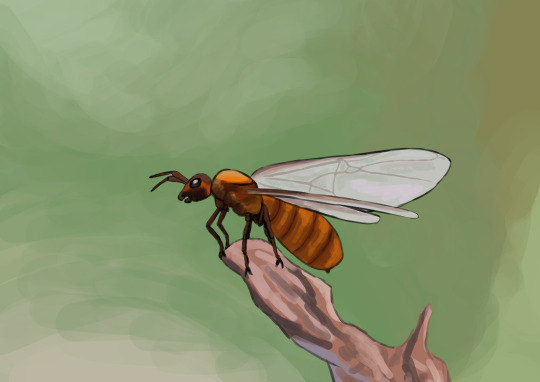
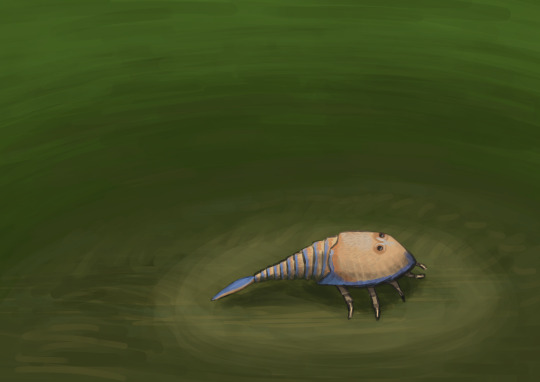
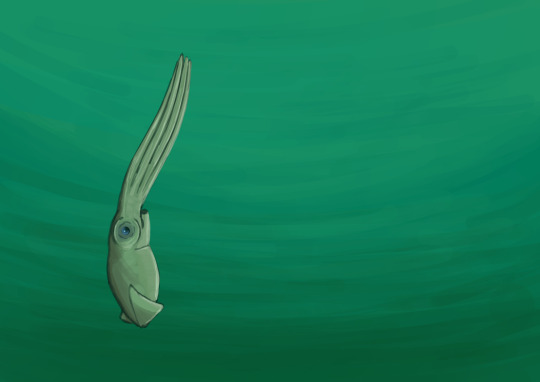
Sketches from the today's special invertebrate-themed flocking paleostream featuring Tyrannasorus rex, Titanomyrma, Hibbertopterus and Proteroctopus.
#art#paleostream#paleoart#paleontology#paleoblr#prehistoric#digital illustration#invertabrates#arthropods
50 notes
·
View notes
Text
ASA: Scorched Earth sessions 2 & 3
Session 2 was fairly uneventful. Session 3 is mostly resource harvesting and base maintenance.
I found and tamed an adult Ceratosaurus (C. Punctura) this morning. The process of taming them is interesting. You have to extract the toxin from their spines, mixing it with blood that is then fed to one of your creatures. As a Cerato attacks your drugged creature, the Cerato gets drugged from their own venom. Once its fully intoxicated, you then hand-feed them meat. That part had me on edge. I wasn't sure how long that state would last, and I definitely didn't have enough of the serum to do so again. But it did last enough, and now I have a powerful ally. I'm borrowing its essence, both to level it and keep it safe until I can find it a mate.
Fun fact, the Cerato- part of Ceratosaurus is from the same root as keratin.
I've got the outside of the house more or less situated, just a few more things to add. I've got some small patios and benches to relax and enjoy the terrain as best as possible. I'm rearranging the crafting stations for better flow, though I won't be able to move the fabricator or the forge anytime soon. Metal collection for the industrial forge is almost complete. I'll have to find a good place for it though, those things are huge.
I used the form of the Cerato to use the dunes to travel to the Blue obelisk. Killed a sandworm along the way, got attacked by a few rock elementals. They're essentially golems, but lie in wait disguised as boulders. Cerato can't effectively deal with them, their stony hide is too tough. I did see a mountainous region with plenty of wild Ceratos, but I'm afraid I didn't mark it down on my map. I essentially traveled in as straight of a line as I could from Blue back home to Green. I did get enough spines to make another infusion though, so that's a plus.
I found out that the Titanomyrma queen is a surprisingly good mount for harvesting. She's fast and can fly with good control. It does mean taking her away from the nest though. I harvested a bunch of cactus sap to make more clay later, stuck it in the fridge to preserve it as best as I can.
Finished up this session with some fishing. I've been using leech blood I pillaged from the bandits. Eventually my supply will be used up though. I might be able to get more from the sandworms. Or more pillaging. I also have sap I can use, so no real concerns there.
Session 3
Spent most of the time so far writing the previous section and letting the ore reserves finish refining. Need that metal, and I didn't leave enough fuel for when I was away.
Hold on, there's a terror bird outside the window. It didn't do any lasting damage, but that was annoying.
Going to use up some extra resources and make some gunpowder. Can't make bullets though- that takes metal. I do need to go harvest sand to make that clay. I think I'll finish up the outside, then start on a second floor. Maybe I'll put the industrial forge there, keep it safe from the sandstorms.
Another terror bird tried the thing where crows pull on the tails of other animals to mess with them, but to one of my Leonis. Oof. That bird is so dead. And now another bandit raid. I was getting suspicious that they haven't been around in a while. My Leonis pride should take care of them. Maybe I'll get another titanomyrma dedicated to defending the area. I'll have to pillage to get the required materials though.
Had an Ovis sheep walk right up to my doorstep. Fortunately I had exactly one of the item I needed to tame it. (See above about pillaging). Not that shearing sheep is particularly useful in a desert...
Honestly, I've been spending so much time writing this I'm not sure I'm going to get much done today. Gunpowder done, I should have just enough metal to build the industrial forge. Making clay right now to finish out the building. I should move my crops off of the roof to make room for the forge.
When I said before that Titanomyrma was great for going harvesting, I understated. Was able to fly out and gather a huge sum of ore. And the ant queen that I tamed wasn't too impressive of a specimen.
Went to harvest wood and got another bandit raid. Got leech blood for fishing though, so its not too bad. I suppose I could put out the sign that stops their attacks, but its very convenient to have supplies delivered right to my door.
I had the idea to recruit some of the humans here, the ones skilled with bows. I remembered seeing plentiful villages out in the dunes. But when I went out there, I was attacked by not one, not two, but FIVE worms. Cerato dealt with them easily.
I've got plenty of leech blood, and I don't want to waste it. Off to go fishing.
[I know I can get the ability to build trains and railway tracks if I buy the Bob's Tall Tales DLC, but I wonder what that's like before I buy]
[Stress from work, and lack of sleep, has caused me to build up quite a lot of fatigue. Ugh.]
0 notes
Text
#indora talks#scott lang#ant-man#ant man#antman#Au#Ants#Ant#Carpenter ant#Fire ant#Bullet ant#Black house ant#Crazy ant#Titanomyrma
2 notes
·
View notes
Note
Today's creature

Titanomyrma
Omg i'm late. My bad!
*gasp!* Are those the ancestors of my ants?!
They’re so cool looking!!
0 notes
Text
Un fossile de fourmi géante soulève des questions sur les anciennes migrations dans l’Arctique
See on Scoop.it - EntomoNews
Les scientifiques de l'Université Simon Fraser (SFU) affirment que la découverte d’un fossile près de Princeton, en Colombie-Britannique, ouvre des portes d’interprétations sur la dispersion des animaux et des plantes dans l'hémisphère nord il y a quelque 50 millions d'années, notamment sur le rôle
Ismaël Houdassine, Regard sur l'Arctique Publié le vendredi 10 mars 2023 à 16:35
[Image] La fourmi reine fossile géante Titanomyrma, récemment découverte dans la formation d’Allenby près de Princeton, en Colombie-Britannique, la première du genre au Canada. (Bruce Archibald)
-------
NDÉ
L'étude
Eocene giant ants, Arctic intercontinental dispersal, and hyperthermals revisited: discovery of fossil Titanomyrma (Hymenoptera: Formicidae: Formiciinae) in the cool uplands of British Columbia, Canada | The Canadian Entomologist, 06.02.2023
Allenby Formation ant, Titanomyrma sp. UBC-BBM-PAL-2022-00001. A, photograph; B, drawing; and C, partially preserved spiracle. A, B to scale = 1 cm; C to scale = 1 mm.
0 notes